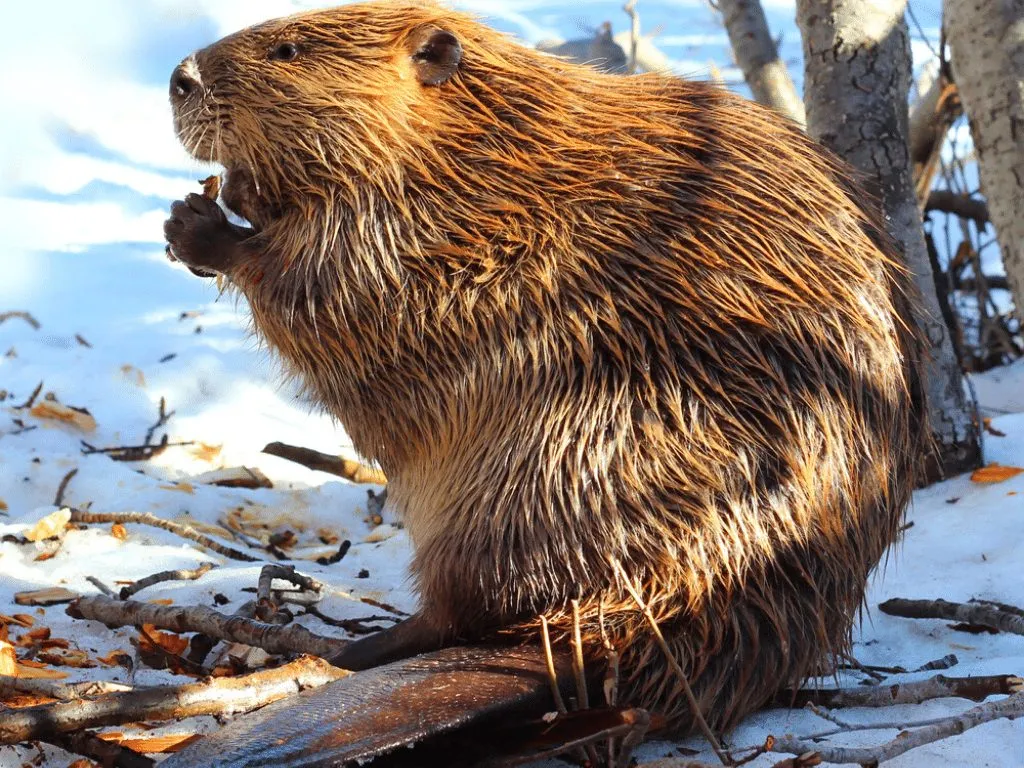The economic impact of beavers on forestry and agriculture is a topic of much debate and study. Beavers, as ecosystem engineers, have the ability to significantly alter landscapes through dam-building activities. While these activities can provide certain ecological benefits, such as the creation of wetlands and improved water quality, they can also pose challenges and economic costs to industries like forestry and agriculture. In this article, we will discuss in detail the economic impact of beavers on these sectors, exploring both the positive and negative effects.

- Forestry: Beavers can have both positive and negative impacts on forestry operations. On the positive side, beaver activity can create new wetland habitats that support a diverse range of flora and fauna, including some economically valuable species. Wetlands can act as natural filters, improving water quality by trapping sediment and pollutants, which can benefit nearby forests.
However, beaver dam-building can also cause negative effects on forestry. When beavers create dams and flood areas, it can result in the loss of valuable timber resources. The flooding can damage or kill trees, affecting timber quality and reducing the profitability of logging operations. Additionally, the altered hydrology caused by beaver activity may increase the risk of erosion and destabilize forested slopes.
To mitigate the negative impacts of beavers on forestry, various management techniques can be employed. These include installing flow devices or beaver deceivers to control water levels and prevent flooding, as well as using exclusion fencing to protect valuable trees from beaver activity. Implementing such measures can help strike a balance between the benefits of beavers for wetland ecosystems and the economic considerations of the forestry industry.
- Agriculture: Beavers can also have both positive and negative impacts on agriculture. On one hand, beaver-created wetlands can act as natural water reservoirs, helping to maintain water levels during periods of drought. This water availability can be beneficial for agricultural irrigation, ensuring consistent water supply for crop production. Additionally, the wetland habitats created by beavers can provide valuable grazing areas for livestock.
On the other hand, beavers can cause negative impacts on agricultural operations. When beavers build dams and flood agricultural fields, it can result in the loss of crops and agricultural infrastructure. Flooding can drown crops, leading to reduced yields or complete loss. Furthermore, the altered hydrology caused by beaver activity may lead to soil erosion and nutrient runoff, which can degrade agricultural land.
To manage the impacts of beavers on agriculture, farmers may employ various strategies. One approach is to implement exclusion measures like fencing to protect fields and crops from beaver damage. Additionally, farmers may use water flow control techniques, such as beaver deceivers or pond leveling devices, to regulate water levels and minimize flooding. These measures help strike a balance between the benefits and challenges that beavers present to the agricultural industry.

- Economic Considerations: When assessing the economic impact of beavers on forestry and agriculture, it is important to consider the broader ecological and social context. While beaver activities can cause short-term economic costs, they also offer long-term ecological benefits that may have indirect economic value.
For example, the wetlands created by beavers can act as natural buffers against floods, reducing the risk of flood damage to agricultural and residential areas. Wetlands also provide habitat for a variety of fish and wildlife species, supporting recreational activities like fishing and hunting, which can contribute to local economies. Furthermore, wetlands help regulate water quality, reducing the need for expensive water treatment infrastructure.
In some cases, the economic benefits derived from beaver habitats can outweigh the costs. For instance, wetlands created by beavers can enhance ecotourism opportunities, attracting nature enthusiasts and generating revenue from activities such as birdwatching, canoeing, and wildlife photography.
To accurately assess the economic impact of beavers on forestry and agriculture, a comprehensive analysis is necessary, considering both the direct costs and indirect benefits. Collaborative approaches involving stakeholders from various sectors, including government agencies, landowners, and conservation organizations, can help develop sustainable management strategies that balance economic considerations with ecological benefits.

In conclusion, the economic impact of beavers on forestry and agriculture is complex and multifaceted. While beavers can create challenges for these industries through their dam-building activities, they also offer ecological benefits that have indirect economic value. By employing management techniques that strike a balance between the benefits and challenges, it is possible to mitigate the negative impacts of beavers on forestry and agriculture while harnessing the long-term benefits that they provide to ecosystems and local economies.